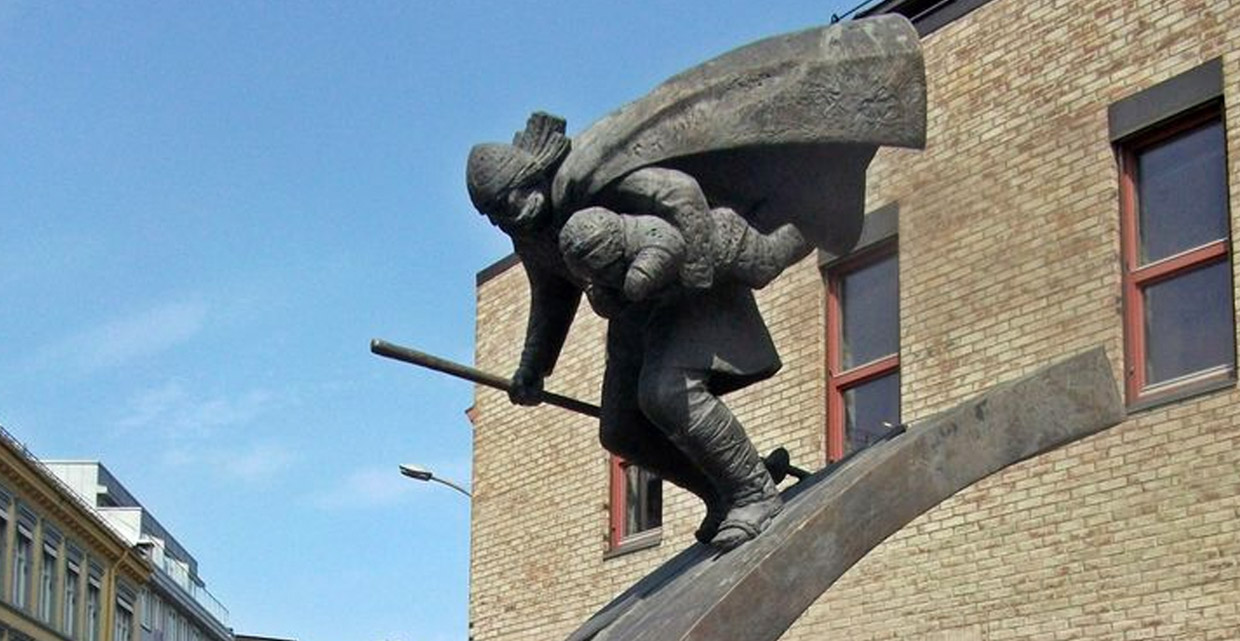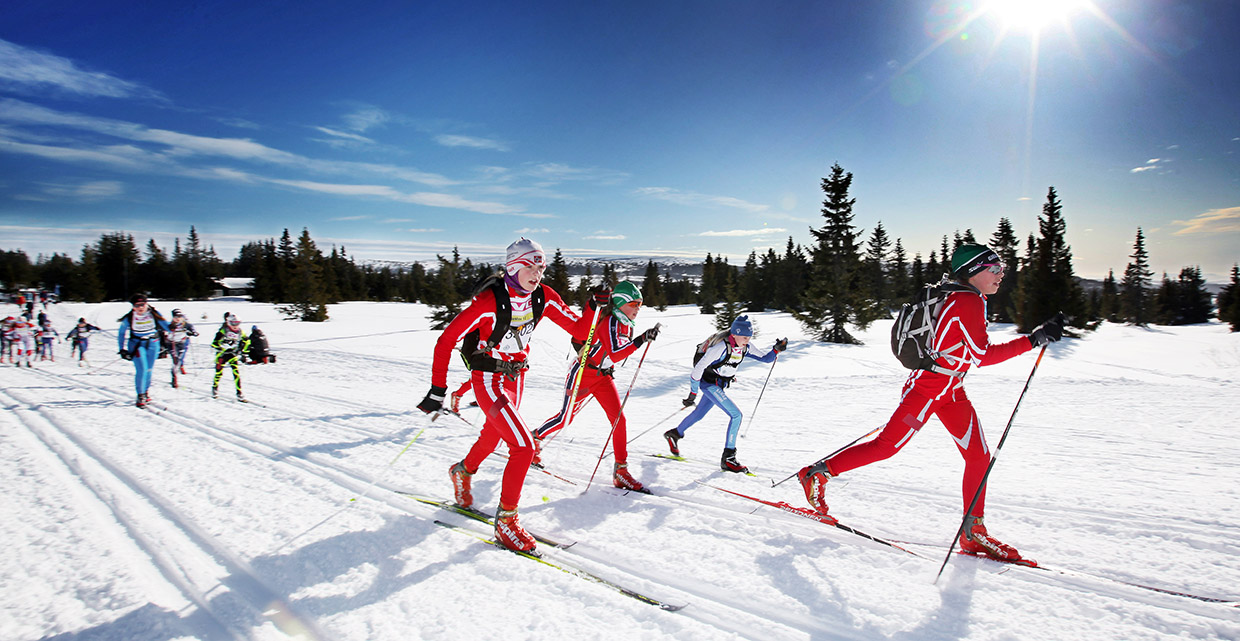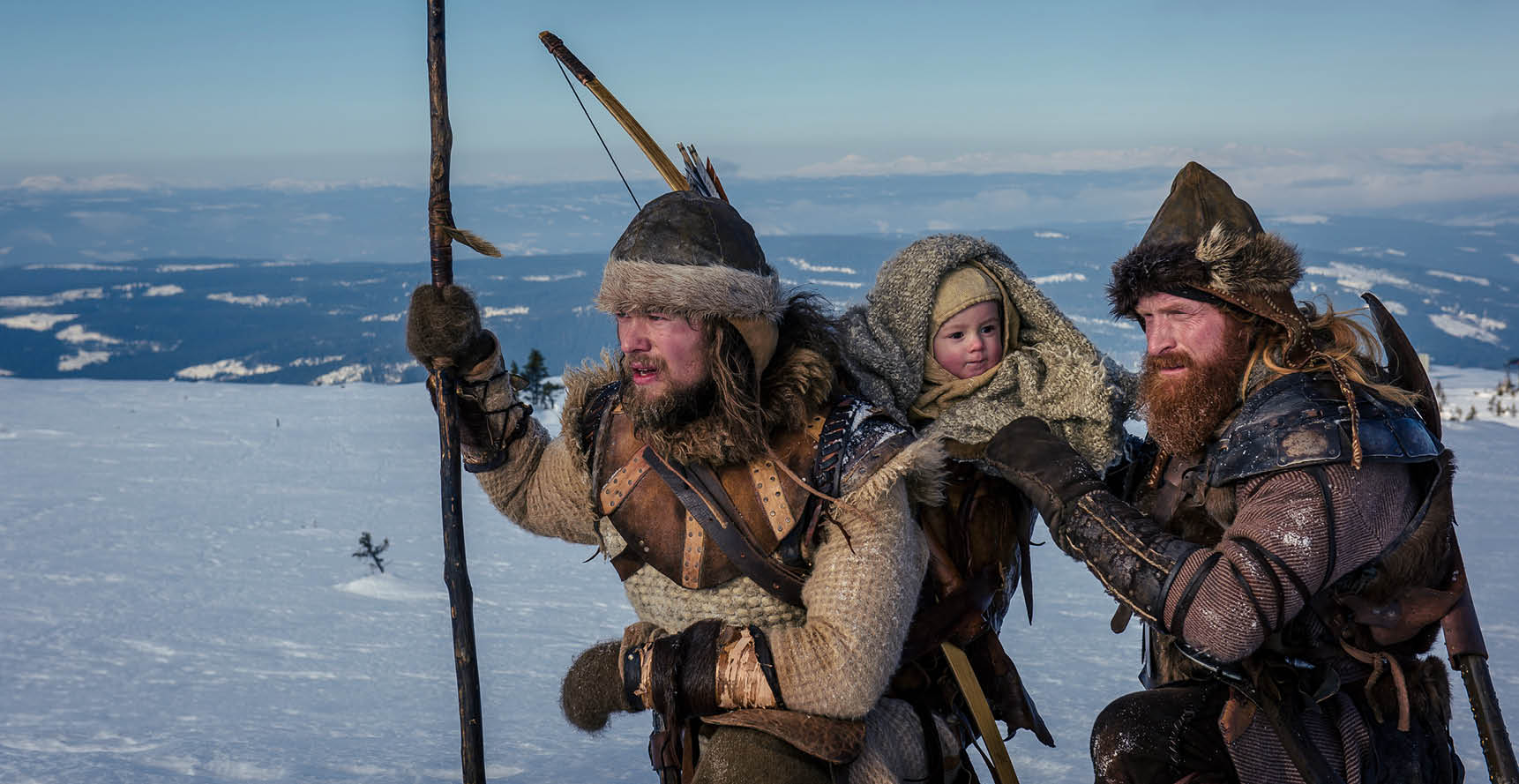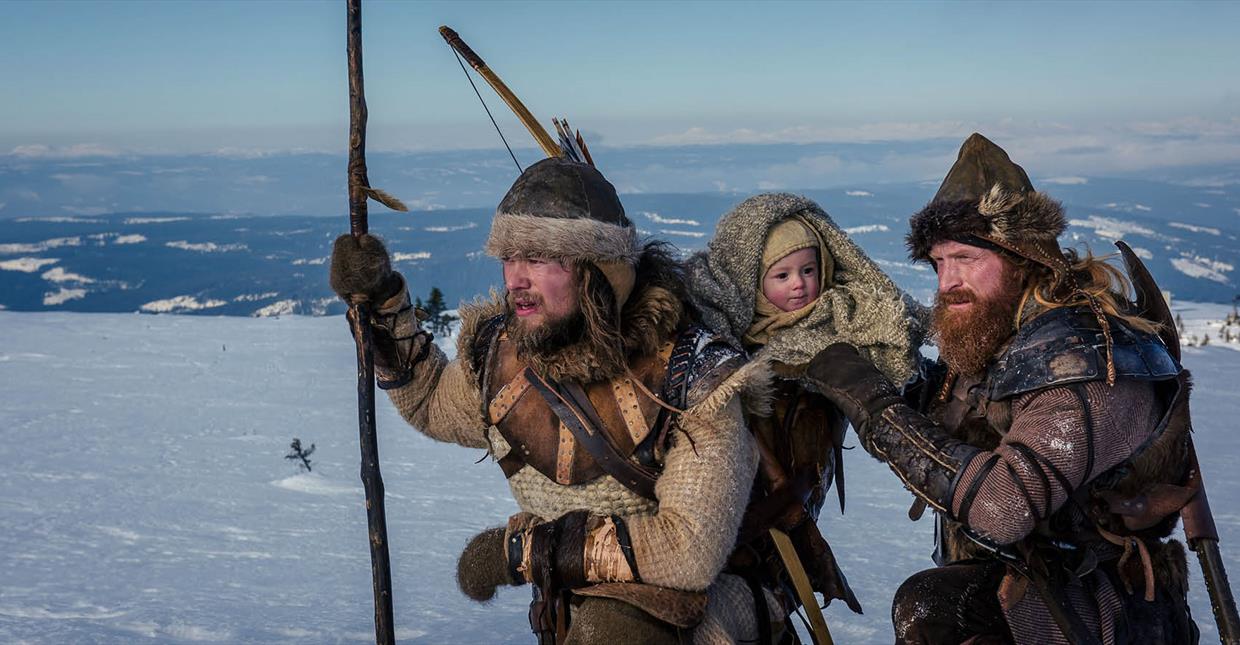"Birkebeinerrennet" or "Birkebeiner Ski Race" is Norway's most traditional cross-country ski race running every year from Rena to Lillehammer. It has been held annualy since 1932, and commemorates a trip made by the Birkebeiner loyalists to save the infant pretender to the Norwegian throne, Håkon Håkonsson, in 1206. All participants carry a backpack weighing at least 3.5 kg, symbolizing the weight of the then-one-year-old king. The Norwegians' relationship to winter, the mountains and cross-country skiing has made this ski race very popular.
History of Håkon Håkonsson
Around year 1200, a civil war was raging in Norway. Under their various chieftains, different groups fought for command of provinces and the realm. The Birkebeiner leader, King Sverre, had conquered most of the country when he died in 1202, but in Viken and across Oplandene, the Bagler faction had a stronghold.
Håkon Håkonsson was born in Østfold in spring 1204. His father, Haakon Sverressøn died on New Year's Eve the same year, and Haakon immediately became a target for the Baglers who wanted rid of this possible heir to the throne. He had to be taken somewhere safe, and some of the Birkebeiners fled with the child with the intention of bringing him to their friend, King Inge, in Nidaros.
They reached Hamar on Christmas Eve 1205, and continued on to a small farm by Lillehammer where they hid over the Christmas period. When they again set off, they did not dare take the regular route through Gudbrandsdalen and travelled across the mountain to Østerdalen instead. It was a difficult journey in severe weather conditions.
 You can see se statue of the Birkebeiner and Håkon Håkonsson in Lillehammer city centre.
You can see se statue of the Birkebeiner and Håkon Håkonsson in Lillehammer city centre.
The two best skiers, Torstein Skevla and Skjervald Skrukka, went on ahead with the child, who was yet to turn two, and reached Østerdalen safely where they were well received by farmers who showed them the way north.
This short saga of the Birkebeiners’ journey is a deed of courage to which Norwegian youth have aspired throughout the ages. We can imagine the two men as they fight their way across the mountain in howling gales, without even considering turning around or giving up. It was the country's future that was at stake, and they used all their courage, strength and willpower to ensure the safety of the child they hoped would become king of Norway.
Håkon Håkonsson did become king, and put a stop to the civil wars. Under his reign, the country enjoyed its golden Middle Ages.
The Birkebeiner Ski Race
The Birkeiner Ski Race, between Rena and Lillehammer, has been held every winter since 1932, and is an event in honour of the Birkebeiners’ historic journey across the mountain. All participants have to carry a 3.5 kg backpack – a symbol of the young heir to the throne, Haakon Haakonsøn. Both the Birkebeiner Ski Race and the Birkebeiner MTB Race follow the 54 km route from Rena to Lillehammer used by the Birkebeiners as they crossed the mountain in 1206. The ski race is held every year in March. Most are Norwegians, but there are also people from other countries taking part.
 The Birkebeiner ski race is held annualy in March, and is very popular amongst norwegians.
The Birkebeiner ski race is held annualy in March, and is very popular amongst norwegians.
The Birkebeiner MTB Race was held for the first time in 1993. Everyone from teenagers to 70 year-olds, both women and men, cycled the 82 km from Rena market square to Håkons Hall by Lillehammer. The cyclists also have to carry a 3.5 kg backpack, which should only contain equipment useful as you cross the mountain (food, drink, clothing, puncture repair kit etc.)
It is the largest mountain bike race in the world, and attracts almost 25 000 participants for its various events – the actual MTB Race, FredagsBirken, UltraBirken, UngdomsBirken (youth) and BarneBirken (children).
The Birken-events are made up of 21 different races in the disciplines of cross-country skiing, mountain biking and cross-country running, and the objective is to offer challenges and adventures for all. For many Norwegians, completing one or more of these events is an important goal and motivational factor in their training.
Film about the Birkebeiners - "The last King"
A Norwegian film about the Birkebeiners "The last King" was released in February 2016. Filming has taken place during winter 2015, and many locations in the region have been used, such as Sjusjøen, Mesnalia, Hafjell and Maihaugen.
 Feature from the film "The last King"
Feature from the film "The last King"
.png)
.png)












#visitlillehammer